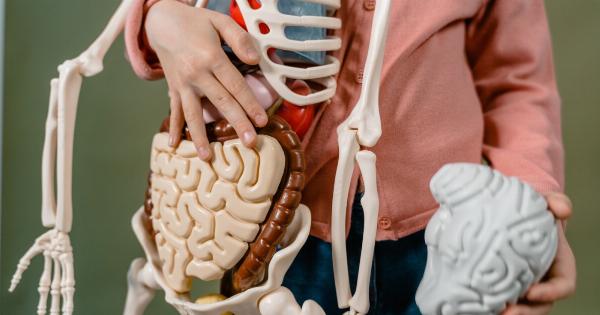Consciousness is a fascinating and complex phenomenon that is central to our human experience. It encompasses our awareness, thoughts, emotions, and perceptions of the world around us.
Understanding the relationship between consciousness and neural activity is a major challenge in the field of neuroscience. Scientists have been exploring this connection for decades, using various methods and theories to shed light on this intricate relationship.
The Neural Correlates of Consciousness
One of the main goals in studying the relationship between consciousness and neural activity is identifying the neural correlates of consciousness (NCC). The NCC refers to the specific neural activity that is associated with conscious experiences.
By identifying these neural correlates, scientists hope to gain insights into how consciousness arises and how it is represented in the brain.
The Global Workspace Theory
One influential theory that attempts to explain the relationship between consciousness and neural activity is the Global Workspace Theory (GWT).
Proposed by cognitive neuroscientist Bernard Baars, the GWT suggests that consciousness emerges from the dynamic interactions between specialized brain regions.
According to the GWT, the brain can be conceptualized as a “global workspace” in which information is processed and shared among different specialized areas.
Consciousness arises when information is globally broadcasted and becomes accessible to multiple brain regions. This global workspace involves both bottom-up processing, where sensory information is integrated, and top-down processing, where higher-level cognitive processes influence the flow of information.
The Role of Neural Networks
Neural networks play a crucial role in the relationship between consciousness and neural activity. These networks are composed of interconnected neurons that communicate through electrical and chemical signals.
As information flows through these networks, it shapes and modulates our conscious experience.
Specific neural networks have been identified as particularly important for consciousness. The default mode network (DMN), for example, is active during self-referential thinking and mind-wandering.
The DMN is believed to be involved in constructing our sense of self and introspective thoughts. Disruptions in the DMN have been linked to altered states of consciousness, such as during meditation or under the influence of certain psychoactive substances.
Electroencephalography (EEG) and Consciousness
Electroencephalography (EEG) is a widely used technique to study neural activity associated with consciousness. It involves placing electrodes on the scalp to measure electrical activity in the brain.
EEG allows researchers to investigate the temporal dynamics of neural activity and identify specific patterns associated with different conscious states.
For example, certain patterns of EEG activity, known as gamma oscillations, have been associated with conscious processing and cognitive functions such as attention and perception.
Studying these oscillations can provide insights into the neural mechanisms underlying conscious experiences.
States of Consciousness and Neural Activity
The relationship between consciousness and neural activity becomes even more intricate when considering different states of consciousness.
Sleep and dreaming, for instance, present unique opportunities to explore the neural underpinnings of consciousness.
During rapid eye movement (REM) sleep, when most dreaming occurs, there is increased activity in the brainstem and visual areas, while the prefrontal cortex (associated with higher-order cognitive processes) shows reduced activity.
This pattern suggests a dissociation between dream consciousness and waking consciousness, highlighting the role of specific brain regions in generating conscious experiences.
The Role of Anesthesia
Studying the effects of anesthesia on consciousness provides valuable insights into the relationship between neural activity and conscious states.
Anesthesia induces an altered state of consciousness, often characterized by a loss of awareness and a reduced responsiveness to external stimuli.
Research using electroencephalography and functional magnetic resonance imaging (fMRI) has shown that the administration of anesthesia leads to a disruption of the normal neural activity patterns associated with consciousness.
Specific brain regions, such as the thalamus and the default mode network, appear to play a crucial role in maintaining consciousness and are particularly affected by anesthesia.
The Hard Problem of Consciousness
Despite significant progress in understanding the relationship between consciousness and neural activity, a fundamental challenge remains – the infamous “hard problem” of consciousness.
This problem, famously posed by philosopher David Chalmers, refers to the question of why and how physical processes in the brain give rise to subjective conscious experiences.
While scientists can identify neural correlates of consciousness and study the mechanisms underlying conscious states, the subjective quality of conscious experiences, referred to as qualia, remains elusive.
The hard problem of consciousness raises profound philosophical and metaphysical questions that continue to challenge scientists and philosophers alike.
Conclusion
The relationship between consciousness and neural activity is a multifaceted and ongoing area of research.
Scientists have made significant strides in identifying the neural correlates of consciousness, exploring the role of specific brain networks, and investigating different states of consciousness.
While theories such as the Global Workspace Theory provide frameworks for understanding how consciousness arises from neural processes, the hard problem of consciousness reminds us that there is still much to uncover.
Further research and interdisciplinary collaboration will continue to deepen our understanding of this intricate relationship that lies at the heart of human existence.





























